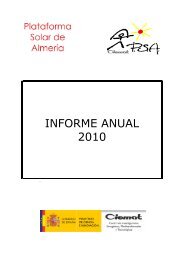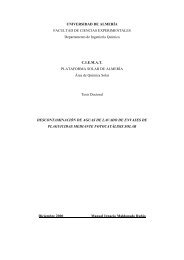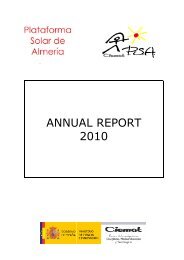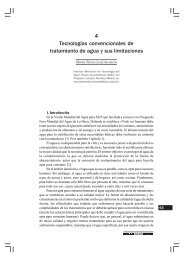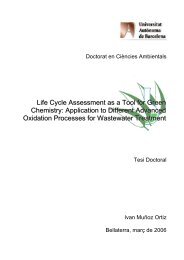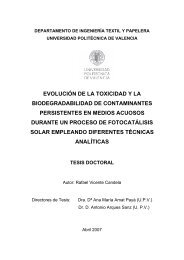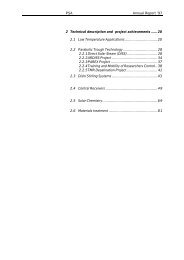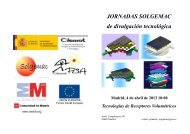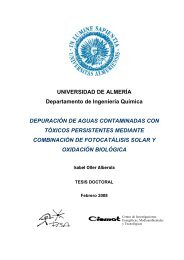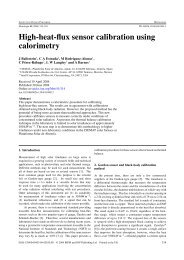Annual Report 2006 - Plataforma Solar de AlmerÃa
Annual Report 2006 - Plataforma Solar de AlmerÃa
Annual Report 2006 - Plataforma Solar de AlmerÃa
Create successful ePaper yourself
Turn your PDF publications into a flip-book with our unique Google optimized e-Paper software.
FACILITIES AND INSTALLATIONS<br />
Figure 2.2 General diagram of the stationary solar collector test platform<br />
system provi<strong>de</strong>s the MED plant with the thermal energy required for its operation.<br />
The solar field is composed of 252 stationary solar collectors (CPC Ao<br />
Sol 1.12x) with a total surface area of 500 m 2 , arranged in four rows of 63<br />
collectors. The maximum working temperature is 100ºC since the collectors<br />
are connected to atmospheric pressure storage tanks in an open loop. The<br />
thermal storage system consists of two water tanks connected to each other<br />
for a total storage capacity of 24 m 3 . This volume allows the operation sufficient<br />
autonomy for the backup system to reach nominal operating conditions.<br />
The double effect (LiBr-H 2 O) absorption heat pump is connected to the last<br />
effect of the MED plant. The low-pressure saturated steam (35ºC, 56 mbar)<br />
produced in this cell supplies the heat pump evaporator with thermal energy,<br />
which would otherwise be discharged to the atmosphere, cutting in half the<br />
thermal energy consumption required by a conventional multi-effect distillation<br />
process. The fossil backup system is a propane water-tube boiler with a<br />
10-bar saturated steam production capacity of 200 kg/h. This boiler ensures<br />
heat pump operating conditions (180ºC, 10 bar), as well as operating the<br />
MED plant in the absence of solar radiation.<br />
2.9 Stationary <strong>Solar</strong> Collector Test Platform<br />
This facility was built in 2002 for the purpose of offering additional services<br />
to the scientific research community, among which was the possibility of carrying<br />
out energy characterization of the stationary solar collectors, with special<br />
emphasis on its possible application to solar <strong>de</strong>salination processes.<br />
The facility has three in<strong>de</strong>pen<strong>de</strong>nt hydraulic circuits. In the primary fluid<br />
circuit (water or water mixed with antifreeze) is heated as it flows through the<br />
solar collector, <strong>de</strong>livering the energy acquired to the water <strong>de</strong>posited in a<br />
storage tank. In the secondary circuit, the water from the tank is pumped to<br />
the heat exchanger where its energy is transferred to the tertiary circuit. This<br />
heat exchanger simulates the hot water inlet in the first cell of a multi-effect<br />
distillation plant. Finally, the water that circulating through the tertiary circuit<br />
toes to a cooling tower where the energy from the secondary circuit is discharged<br />
into the atmosphere.<br />
27



